What's New
Displaying results 4521 - 4530 of 4914
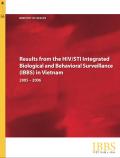
Resource | Publications,
From October 2005 to June 2006, integrated HIV biologic and behavioral surveillance (IBBS) was conducted among selected population groups in Hanoi, Quang Ninh, Hai Phong, Da Nang, Ho Chi Minh City (HCMC), An Giang, and Can Tho. The IBBS utilized community-based sampling to estimate the prevalence of HIV and other sexually transmitted infections (STI) and to provide indicators of risk behaviors and intervention exposure among most-at-risk population groups. These included female sex workers (FSWs), injecting drug users (IDUs) and men who have sex with men (MSM).

Resource | Publications,
In Việt Nam, 263,000 people are estimated to be living with HIV/AIDS and approximately 150,000 people are diagnosed with cancer each year. It is well documented that pain and suffering are prevalent among people with these and other life-limiting illnesses. While international research shows that from 60 to 80% of people with HIV/AIDS and cancer will experience distressing symptoms including pain particularly in the last stages of life, very little is known regarding palliative care needs in Viet Nam.
To better appreciate and respond to the full spectrum of palliative care needs in Việt Nam, the Therapy Department of the Ministry of Health in cooperation with international partners, FHI, Policy Project, VCHAP, USAID and USCDC through the US Government President’s Emergency Plan for AIDS Relief, conducted in summer 2005 a rapid situation analysis (RSA) in five high HIV and cancer prevalence provinces in Việt Nam: Hanoi, Hai Phong, Quang Ninh, HCMC and An Giang.
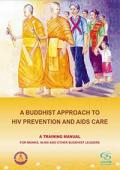
Resource | Tools,
In many countries of East Asia and the Pacific the ‘heart of the community’ is the place of worship, be it a mosque, temple, church or other sacred site. This is certainly true of Buddhist communities in Cambodia, Lao PDR, Mongolia, Myanmar, Thailand, Viet Nam and of Yunnan, the southernmost province of China. It is equally true that in the countries most affected by HIV and AIDS to date, religious leaders have taken a leading role in providing services to those affected, in caring for the ill, for those orphaned and widowed and in reducing community stigma and discrimination.
This manual has been designed to help facilitators to conduct workshops with Buddhist monks, nuns, novices, lay teachers and other leaders on the issues of HIV and AIDS. The workshop sessions apply Buddhist teachings to understand the suffering and challenges of communities facing the crisis of HIV and AIDS. It is based on the experience of working with and training Buddhist leaders in countries throughout South and South-East Asia.
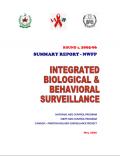
Resource | Publications,
The findings presented here are part of the round one surveillance activities carried out in eight cities of Pakistan by the National AIDS Control Program through its HIV/AIDS Surveillance Project. The basic goal of this research is to estimate and map the various HIV high-risk groups in Pakistan, including Intravenous Drug Users and Commercial sex workers (female sex workers, male sex workers & eunuch sex workers); estimate the prevalence of HIV infection and collect behavioral data for monitoring of the epidemic and its associated factors in the country.
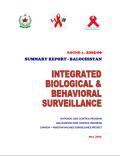
Resource | Publications,
The findings presented here are part of the round one surveillance activities carried out in eight cities of Pakistan by the National AIDS Control Program through its Canada-Pakistan HIV/AIDS Surveillance Project (HASP). The basic goal of this research is to estimate and map the various HIV high-risk groups in Pakistan, including IDUs and Commercial sex workers; estimate the prevalence of HIV infection and collect behavioral data for monitoring of the epidemic and its associated factors in the country. Each surveillance round includes a mapping study to develop the sampling frame followed by in-depth interviews with High-Risk Groups (HRGs) to collect behavioral as well as biological data.
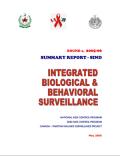
Resource | Publications,
The findings presented here are part of the round one surveillance activities carried out in eight cities of Pakistan by the National AIDS Control Program (NACP) through its HIV/AIDS Surveillance Project (HASP). The primary goal of this research is to estimate and map the various HIV high-risk groups in Pakistan, including injection drug users (IDUs) and commercial sex workers (CSWs); estimate the prevalence of HIV infection and collect behavioral data for monitoring of the epidemic and its associated risk factors in the country.

Resource | Publications,
From UNAIDS' launch in 1996 until 2005, available annual funding for the response to AIDS in low- and middle-income countries increased 28-fold, from US$ 300 million to US$ 8.3 billion. Existing pledges, commitments and trends suggest the rate of increase may be declining and that available funds will be US$ 8.9 billion in 2006 and US$ 10 billion in 2007.
Global and national advocacy to boost and sustain political leadership and public support remain essential. Also essential is making far better use of funding flows that are available. That means streamlining the flow of financial resources to the front lines of the epidemic, putting it to optimal use and providing HIV-related prevention, treatment, care and support as quickly as possible to everyone in need.
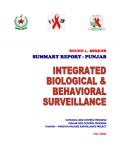
Integrated Biological and Behavioral Survey in Pakistan Summary Report - Punjab: Round 1 - 2005-2006
Resource | Publications,
The findings presented in this report are part of the round one surveillance activities carried out in three cities of Punjab by the National AIDS Control Program / Punjab AIDS control Program through its HIV/AIDS Surveillance Project (HASP). The purpose of present study was to map the vulnerable population like injecting drug users (IDUs), female sex workers (FSWs), male sex workers (MSWs) and eunuch sex workers (ESWs) in Punjab. After mapping behavioral and serological data was collected for these vulnerable groups in order to monitor the epidemic in the province.
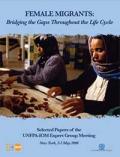
Resource | Publications,
Women make up nearly half of all migrants, an estimated 95 million of 191 million people living outside their countries of origin in 2005.1 Having said this, after many years of observing migration and collecting data there is remarkably little reliable information about women as migrants. This anomaly underlines their continuing invisibility to policymakers and development planners. The High-Level Dialogue on International Migration and Development by the General Assembly on 14-15 September 2006 offers the best opportunity in a generation to address the rights, needs, capabilities and contribution of women migrants.
This report includes the different perspectives of experts on female migration from countries of origin, transit and destination from all five continents, as well as representatives from international agencies, NGOs and diaspora organizations. This twoday expert group meeting also produced a set of conclusions and recommendations for all stakeholders to be conveyed to the United Nations High-Level Dialogue on International Migration and Development at the General Assembly in September 2006.

Resource | Publications,
The commitment to scaling up towards universal access (UA) is not a target itself. Rather it emphasizes urgency, quality and equity, and involves the development of a comprehensive package of prevention, treatment, care and support relevant to each country. In such a context, the use of specific targets can help countries define and prioritize their efforts in relation to coming as close as possible to universal access by 2010.





